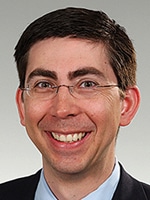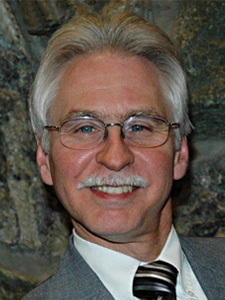Karen Titus
February 2021—From the first, the COVID-19 pandemic has been marked by absence. Reagents and instruments, collection tubes and pipette tips; enough technologists to handle the overwhelming workloads; sleep—so much went missing or was in short supply, month after month.
But for laboratory leaders, the biggest vacancy sign flashed above something less embodied: a national testing strategy.
Behind every tense conversation within and among labs trying to keep pace with SARS-CoV-2 testing, no broader discussion or scheme seemed to be taking place—at least not publicly, or with any transparency.
Now, as a new administration settles into Washington, lab leaders are giving thought to what a coordinated testing response might look like and how to make it happen. This is not another empty exercise. Even with the late-January executive order establishing a COVID-19 Pandemic Testing Board, and amid the ongoing vaccine rollout, the current pandemic is far from over. It’s also unlikely to be the last.
At the end of December, as he looked back over 2020, Gregory Sossaman, MD, saw another drought affecting labs—a general lack of knowledge about how public health laboratories function. If he were inclined to point fingers, he’d start with himself. “I should have better knowledge about this,” says Dr. Sossaman, system chairman and service line leader, pathology and laboratory medicine, Ochsner Health, New Orleans.
Dr. Sossaman
Dr. Sossaman notes the topic came up at a CDC Clinical Laboratory Improvement Advisory Committee meeting he attended last October, which included presentations from public health labs talking about pandemic emergency preparedness. Clinical labs are unlikely to have the “black box” view of their public health colleagues that outsiders have of lab testing in general. Nevertheless, as Dr. Sossaman puts it, “I don’t think many people who occupy positions like I have—who run labs for large health systems or hospitals—have much knowledge about the setup of public health labs, what they’re prepared to do, and what capabilities there are for state and federal action around pandemics or other emergencies.”
That knowledge gap surfaced as SARS-CoV-2 testing ricocheted between public health and clinical labs. In some ways it still persists. Case in point: The twice-weekly podcast “This Week in Virology,” which has become a pandemic must-listen for many, devoted most of its Jan. 10 episode (www.microbe.tv/twiv/twiv-705/) to an interview with Emily Travanty, PhD, of the Colorado Department of Public Health and Environment laboratory, which was the first to identify, on Dec. 29, the presence of the SARS-CoV-2 variant VOC 202012/01 (known informally as B.1.1.7) in the United States.
Though the interviewers clearly know their way around clinical labs, they had plenty of questions about what public health laboratories do beyond newborn screening and tracking foodborne illnesses (and, in Colorado’s case, plague). As it turns out, Dr. Travanty suggested, labs like hers could be well positioned to do gene sequencing to detect virus variants and even help with vaccine distribution.
Once lab leaders take a more panoptic view, it will be easier to know how to connect the dots between clinical, public health, and large commercial laboratories. Does there need to be another layer to pull it all together, Dr. Sossaman asks, or should current structures be built out? There’s little doubt, he says, that entities such as LabCorp and Quest, and the American Clinical Laboratory Association, were in touch, on some level, with federal public health leaders, such as those on the team of admiral Brett Giroir, MD. “But at least from what I know, there’s not been good communication between the federal response coordinating with states and coordinating with large hospital laboratories.”
All of which, he says, is a call for “educating people on what the current system actually is, and then improving communication with all those labs.”
“And then bringing in vendors and suppliers,” he adds.
Even among his colleagues in the Compass Group—hardly an uninformed lot—“We seem to have a similar understanding, and that understanding does not include state or federal plans around this pandemic.
“That’s what I mean when I say it hasn’t filtered down,” Dr. Sossaman continues. “Most of us probably don’t have relationships with state public labs, the way our ID physicians do, and we definitely don’t have relationships at the federal level. And that could be one of the best places to start. Let’s see what’s in place, and then build communications to integrate the hospital labs.”
Had that happened last spring, the SARS-COV-2 testing response might have resembled a cyclorama, rather than mostly empty galleries punctuated by the odd, badly hung painting. “Let’s pull everybody in who’s going to be doing testing in the country. Not just Quest and LabCorp,” Dr. Sossaman says. He’d also like leaders to see that public health labs—for all they do—aren’t sufficiently funded to do large-scale clinical testing. (In fact, that’s why labs such as his have absorbed public health testing. “We’re doing lots of testing for the state right now,” Dr. Sossaman says.)
With the players linked, laboratory leaders could say, “This is the federal landscape, this is the state landscape, this is where we see you being most helpful,” says Dr. Sossaman. Then, “If you can do this type of testing, how can we get you the resources you need?”
In Nebraska, pathologist Tom Williams, MD, got an early jump on seeing how state labs were poised for SARS-CoV-2 testing. Dr. Williams, formerly with Nebraska Methodist Hospital and the state’s former chief medical officer, maintains close ties with his successor in the Nebraska Department of Health and Human Services as well as with the state epidemiologist. So when he temporarily unretired last spring to help with the pandemic response, he didn’t have to unravel the mysteries of public health in the midst of a crisis. His experiences offer one possible path to a more lucid testing plan.As he worked to assess the state’s testing preparedness, “I was also concerned about mass fatality planning. Because that’s something that is generally neglected by communities and hospitals,” says Dr. Williams, who spoke with CAP TODAY last summer.

Dr. Williams
Reaching out to colleagues, he was reminded of something he’d long been aware of in his role as the state’s CMO: “One piece that doesn’t happen enough in public health is leveraging professional societies. The smartest thing I did in mass fatality planning was to talk to the current president and executive director of the Nebraska Funeral Directors Association and leadership of the Nebraska Association of Pathologists.” Dr. Williams and his counterparts sent out resources—the state plan as well as a good sample community plan—that could be used if the COVID-19 death toll became overwhelming. “I wanted to be sure that everybody around the state who could be hit with this problem knew what the state plan was.”
Pre-pandemic, such outreach might have been seen as nice but not necessary; in 2020, its lack could have been horrifying. No wonder Dr. Williams echoes Dr. Sossaman’s call to deepen the connection between clinical and public health laboratories.
“Look, physicians are pretty much unaware of public health in general,” Dr. Williams says. As CMO, he went to his fair share of meetings sponsored by public health groups. “There’d be a room with 200 nurses and no doctors,” he recalls. He knows hospitals might not encourage or compensate their pathologists to connect with their public health counterparts. And not all physicians will share his deep interest, he says, speaking from experience. Lack of interest might have worked before 2020, but not any longer, he says. “This pandemic has operated at a public health level.” Pathologists literally need to walk through the doors of their local health departments, he says, and meet with their public health and lab colleagues. “Now is a really good time for pathologists to do that.”
Dr. Williams sees the public health/clinical lab split as largely artificial. “Pathologists and public health are very much alike,” he says. Public health, with its focus on systems, epidemiology, science, and disease control, “is probably closer to pathology than any other specialty.”
 CAP TODAY Pathology/Laboratory Medicine/Laboratory Management
CAP TODAY Pathology/Laboratory Medicine/Laboratory Management
